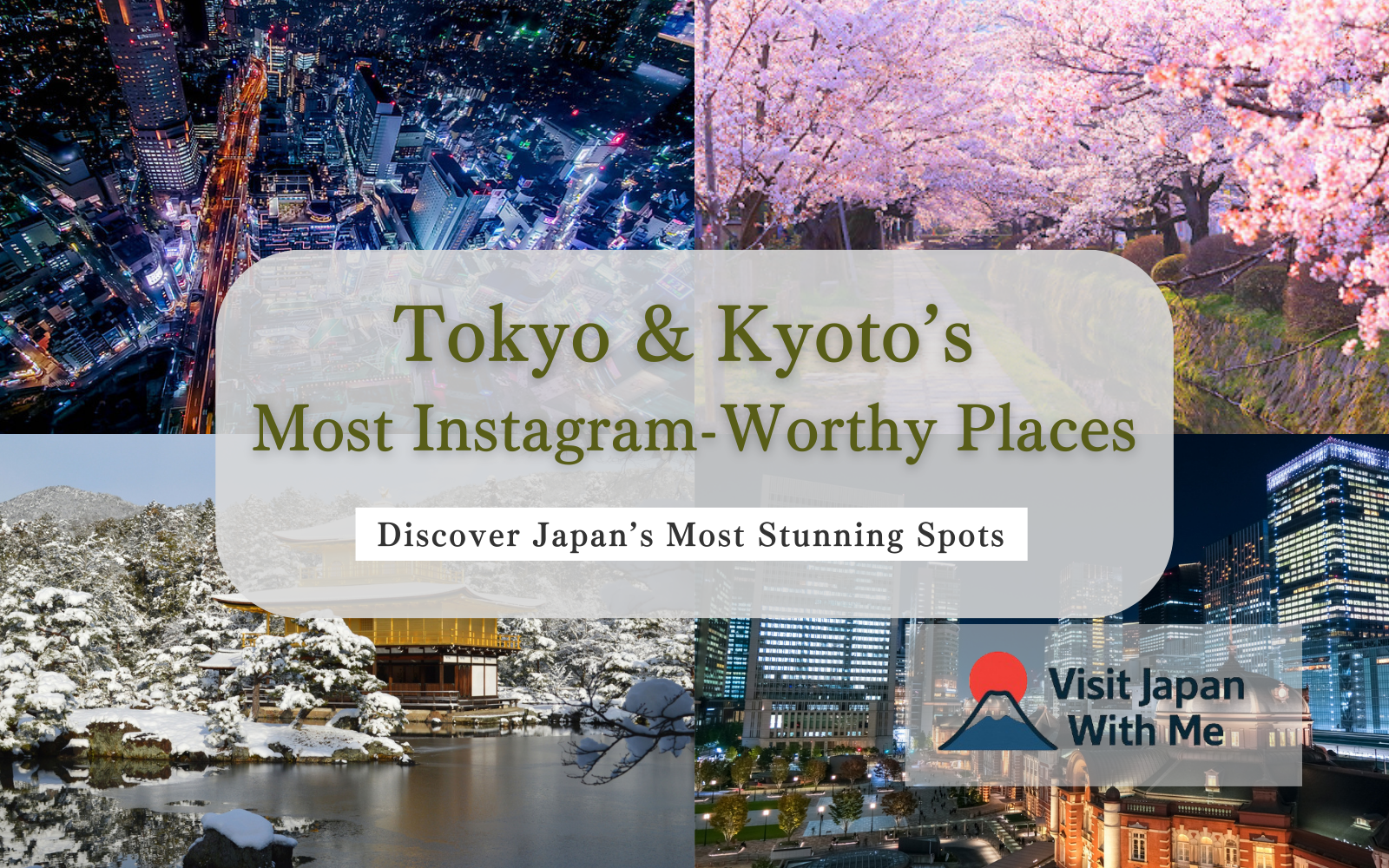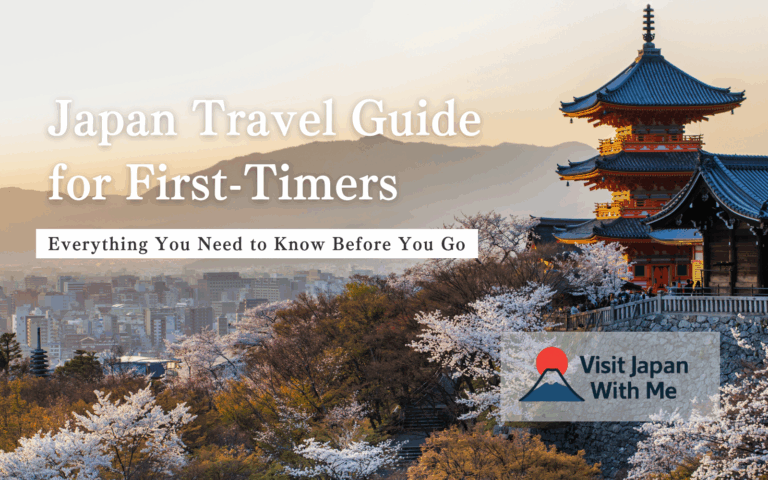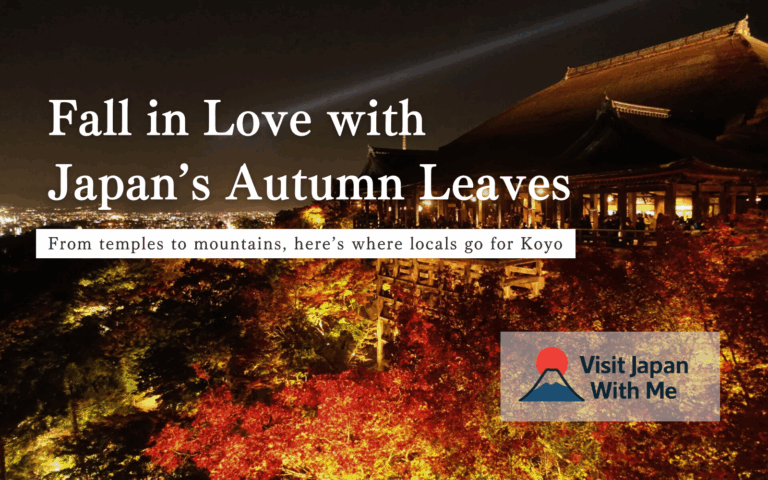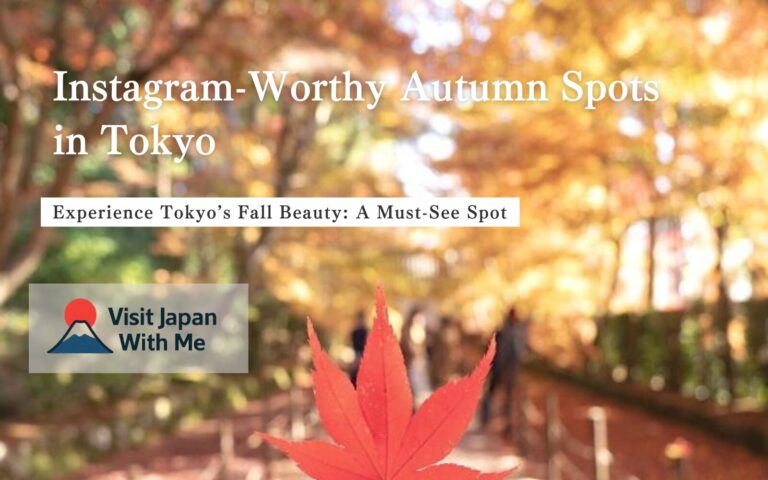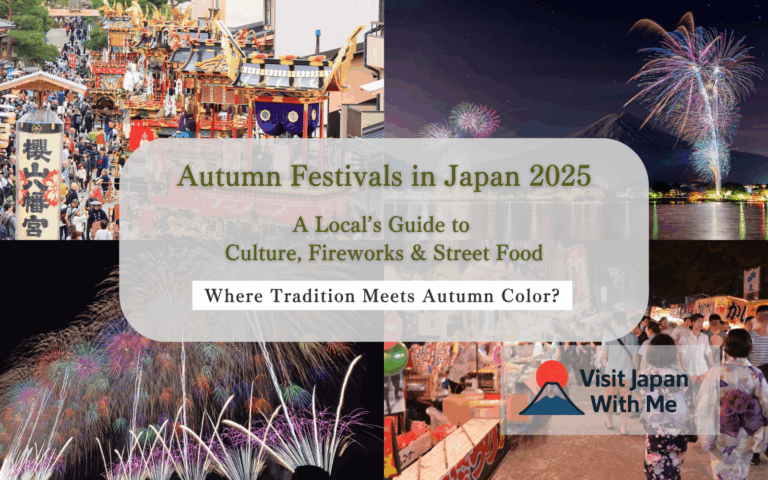Top Instagram-Worthy Spots in Tokyo and Kyoto, Japan
Tokyo and Kyoto are two of Japan’s most iconic destinations—one buzzing with neon lights and modern vibes, the other steeped in tradition and timeless charm.
If you’re looking to fill your Instagram feed with stunning shots, these cities offer endless opportunities, from vibrant cityscapes and trendy cafés to serene temples and seasonal scenery.
In this guide, we’ll share the most photogenic spots in both cities, complete with tips on the best times to visit, what to capture, and how to make your photos truly stand out.
🗾 More Japan travel tips coming soon!
We’re a local team based in Japan, and we’re adding more helpful tips and real insider info soon.
Don’t miss out—bookmark this site and come back for fresh updates!
🔖 Bookmark Now📸 Tokyo’s Most Instagrammable Spots (That Are Also Worth the Trip)
If you’re visiting Tokyo and want more than just beautiful photos—if you’re looking for experiences that truly capture the city’s energy, creativity, and charm—this guide is for you.
These three iconic spots not only look amazing on camera but also offer rich, memorable moments that reflect different sides of Tokyo: traditional, urban, and futuristic.
1. Senso-ji Temple (Asakusa) – Timeless Tokyo
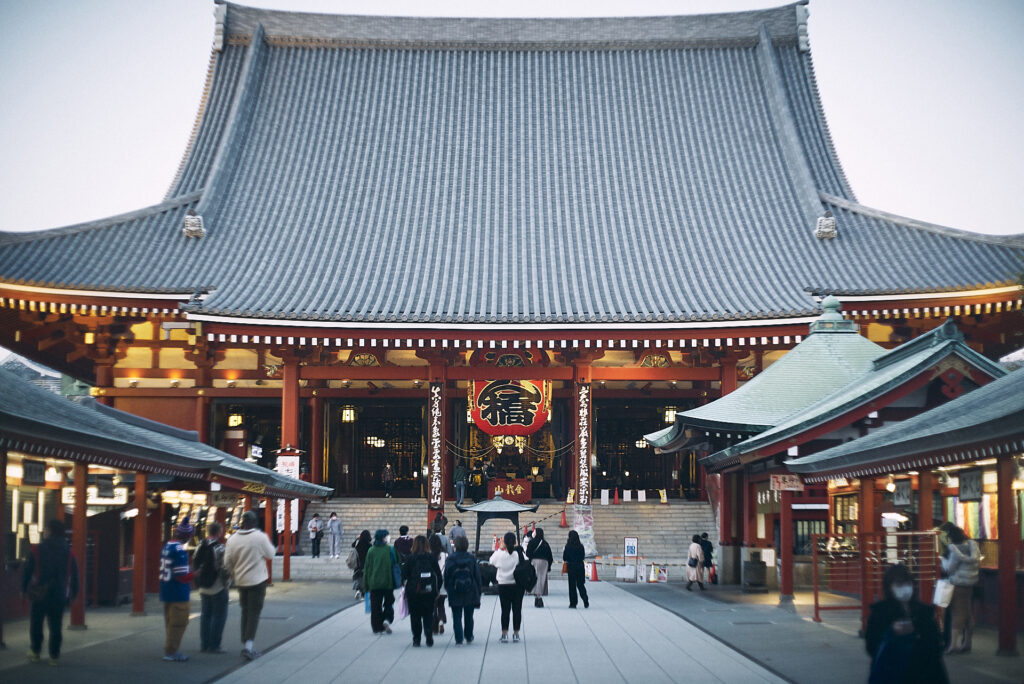
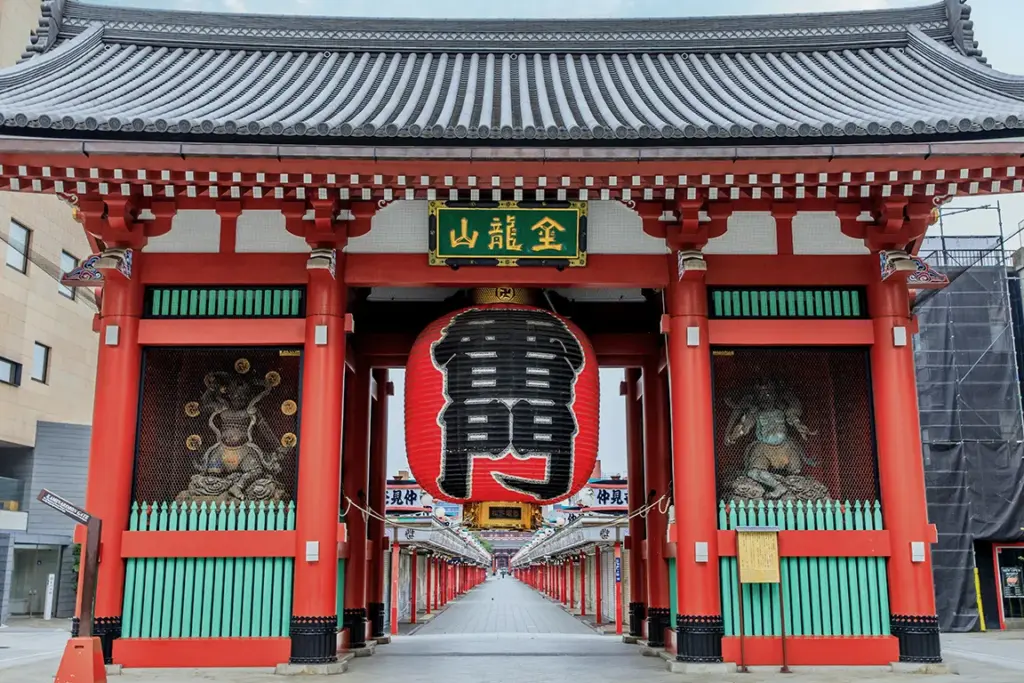
Tokyo’s oldest Buddhist temple, instantly recognizable by the massive red lantern at Kaminarimon Gate. Stroll through the lively Nakamise shopping street before reaching the main hall, where history and energy meet. Early morning or late afternoon offers softer light and fewer crowds. Renting a kimono adds a traditional flair to your photos.
📍 Access: 5-minute walk from Asakusa Station (Tokyo Metro Ginza Line / Toei Asakusa Line)
💡 Tip: Head to the rooftop of Asakusa Culture Tourist Information Center for a free panoramic view.
⏱ Average Visit Time: 1–2 hours
🌸 Best Season: Spring (cherry blossoms) and autumn (colorful foliage)
📸 Instagram Tip: Use #Sensoji or #Asakusa for more reach
2. Shinjuku Gyoen National Garden — Seasonal Perfection

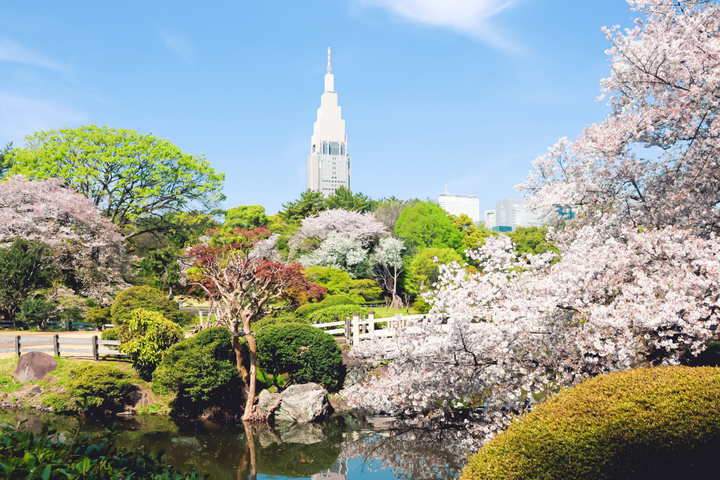
A vast garden blending Japanese, English, and French landscaping styles, Shinjuku Gyoen is a seasonal paradise. Cherry blossoms in spring, maple leaves in autumn, and green lawns in summer make it a year-round favorite for photographers.
📍 Access: Shinjuku Gyoemmae Station (Tokyo Metro Marunouchi Line) or Sendagaya Station (JR Chuo/Sobu Line)
💡 Tip: Arrive early during cherry blossom season to avoid crowds.
⏱ Average Visit Time: 1–2 hours
🌸 Best Season: Spring & Autumn
📸 Instagram Tip: Use #ShinjukuGyoen or #TokyoGarden
3. Tokyo Tower – Classic City Icon
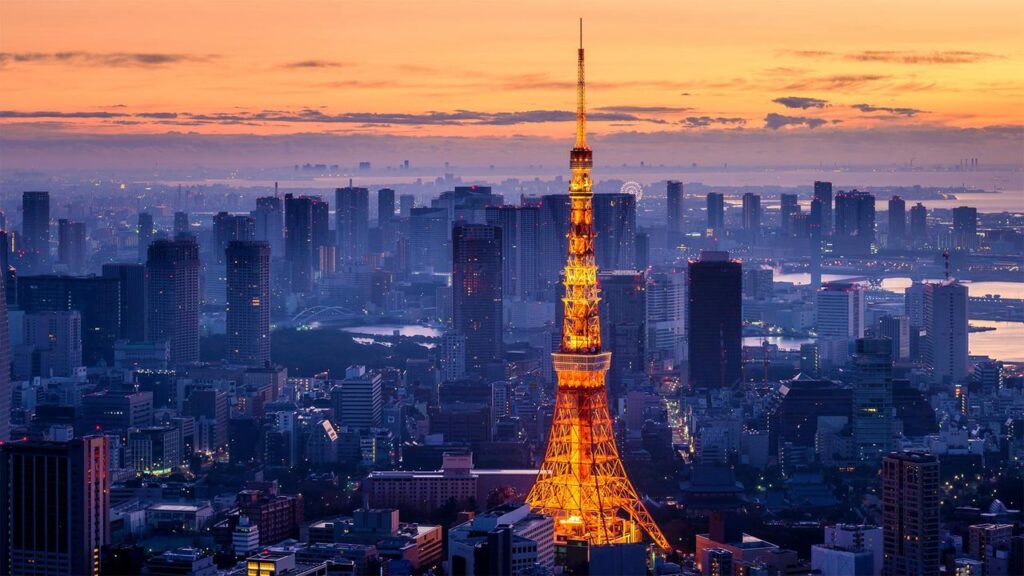

The classic symbol of Tokyo’s skyline, Tokyo Tower offers a nostalgic yet timeless appeal. Its vivid orange-and-white structure stands out beautifully against blue skies or at night when it’s illuminated. The observation deck provides sweeping city views — and even Mt. Fuji on clear days.
📍 Access: Akabanebashi Station (Toei Oedo Line) or Kamiyacho Station (Tokyo Metro Hibiya Line)
💡 Tip: For a unique angle, shoot from Zojo-ji Temple with Tokyo Tower in the background.
⏱ Average Visit Time: 1–2 hours
🌸 Best Season: Year-round (winter skies are clearest)
📸 Instagram Tip: Use #TokyoTower or #TokyoView
4. Shibuya Scramble Crossing — Tokyo’s Pulse
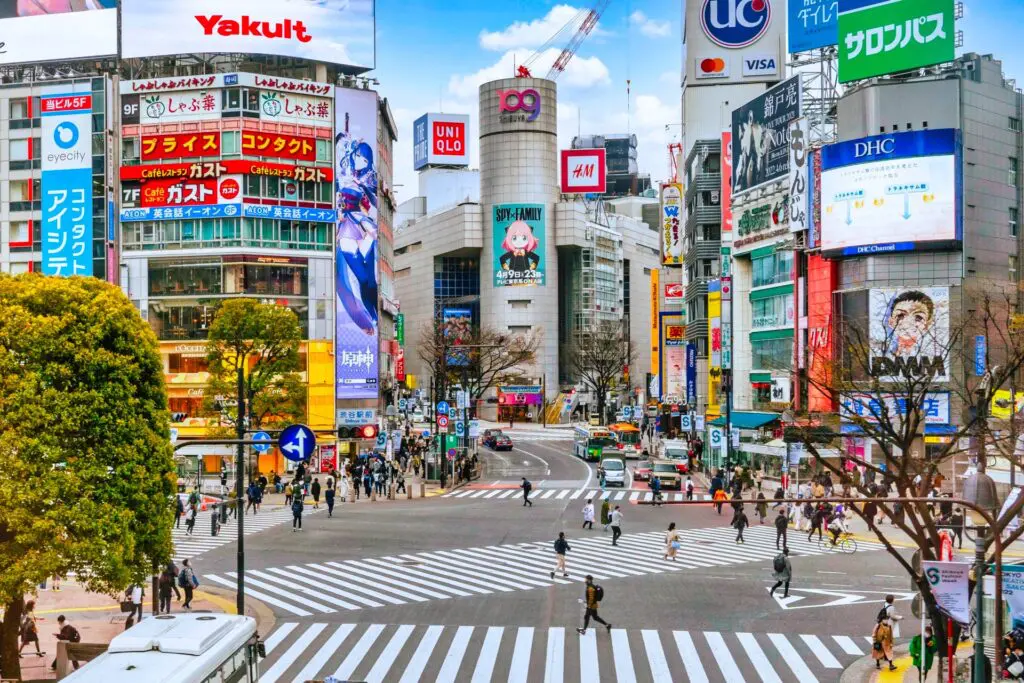

Arguably the busiest pedestrian crossing in the world, Shibuya Scramble is a chaotic yet thrilling Tokyo icon. Capture the rush from street level or from above at Shibuya Sky or Starbucks Tsutaya for that perfect “Tokyo energy” shot. Nighttime offers neon brilliance, while daytime shows off the city’s scale.
📍 Access: Directly connected to Shibuya Station (multiple lines)
💡 Tip: Time your photo during the green light cycle for maximum crowd density.
⏱ Average Visit Time: 30–60 minutes
🌸 Best Season: Year-round (different vibes day/night)
📸 Instagram Tip: Use #ShibuyaCrossing or #ShibuyaSky
5. Odaiba Waterfront — Tokyo’s Seaside Escape
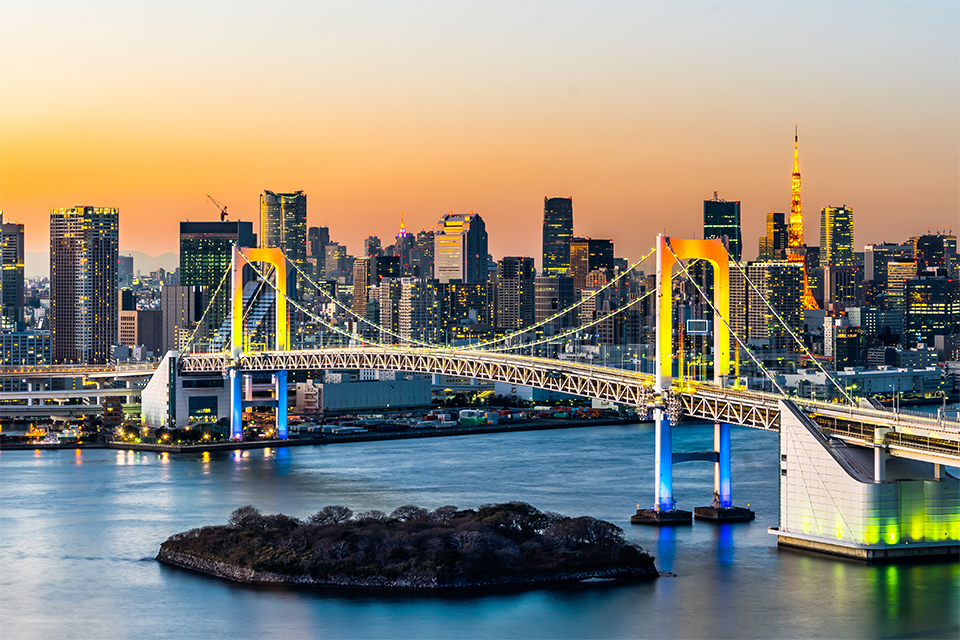
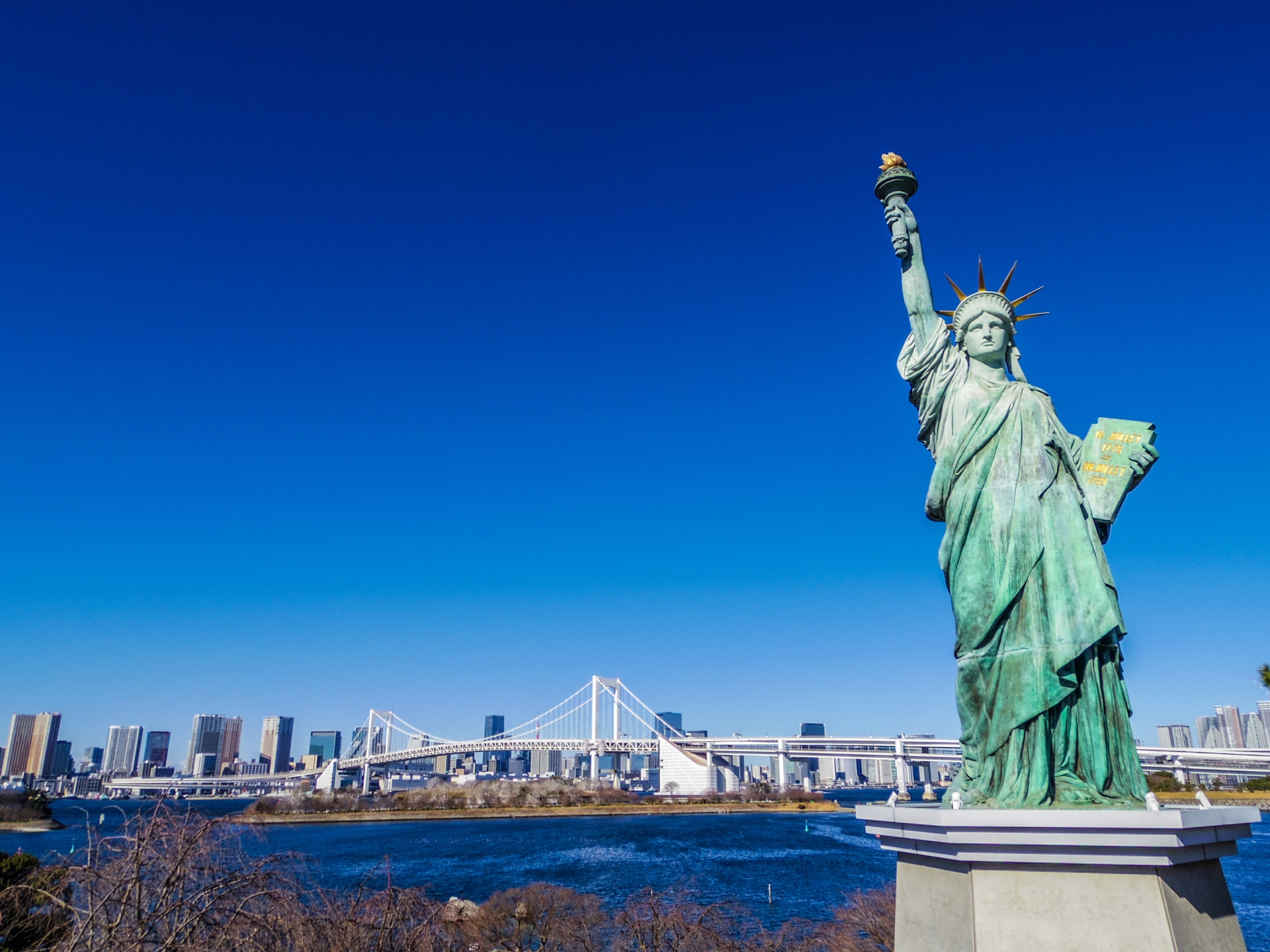
Odaiba is Tokyo’s entertainment-packed waterfront district, offering stunning views of Tokyo Bay and the iconic Rainbow Bridge. By day, enjoy a relaxing stroll along the seaside promenade, shop in its massive malls, or marvel at the life-sized Gundam statue standing guard at DiverCity Tokyo Plaza. By night, watch the skyline come alive with twinkling lights reflected on the water. The Statue of Liberty replica and wide open spaces make it perfect for both photography and leisure.
📍 Access: Daiba Station (Yurikamome Line) or Tokyo Teleport Station (Rinkai Line)
💡 Tip: Visit before sunset to capture both daylight and nighttime views in one trip.
⏱ Average Visit Time: 2–3 hours
🌸 Best Season: Spring & Autumn (pleasant weather for walking)
📸 Instagram Tip: Use #Odaiba or #RainbowBridgeTokyo
6. Meiji Shrine — Serenity in the City

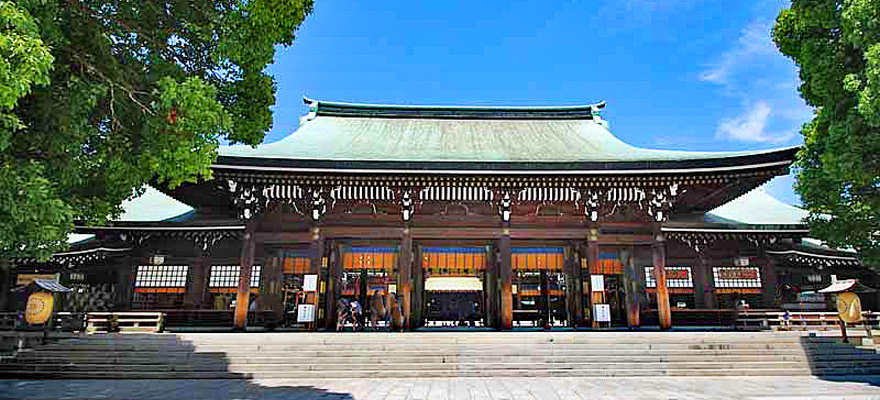
Hidden in a lush forest between Shinjuku and Shibuya, Meiji Shrine is a peaceful retreat. The giant wooden torii gate, long tree-lined paths, and traditional architecture make it an ideal place for capturing Japan’s spiritual beauty. Visit early morning for a magical, quiet atmosphere.
📍 Access: Harajuku Station (JR Yamanote Line) or Meiji-jingumae Station (Tokyo Metro Chiyoda/Fukutoshin Line)
💡 Tip: Frame the torii gate symmetrically for a powerful composition.
⏱ Average Visit Time: 1–1.5 hours
🌸 Best Season: Spring for fresh greenery, autumn for golden leaves
📸 Instagram Tip: Use #MeijiShrine or #TokyoNature
7. TeamLab Planets — Immersive Digital Art
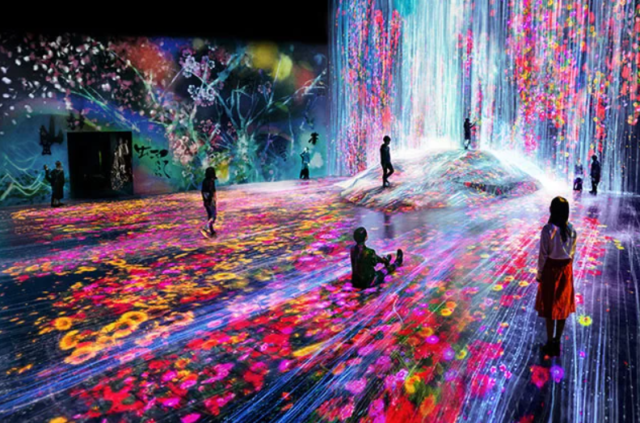
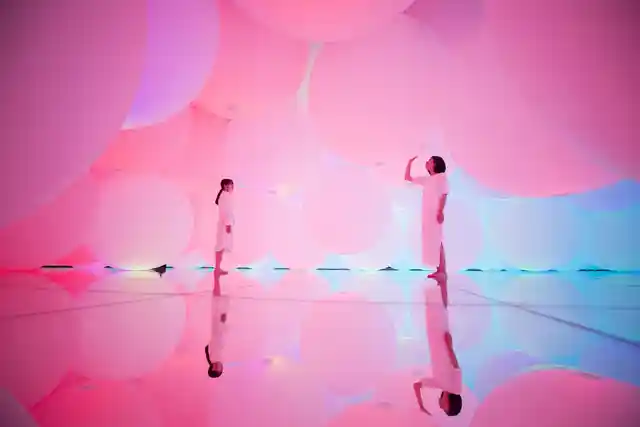
Step into a dreamlike digital art world at TeamLab Planets, a must-visit attraction that even drew Elon Musk during his trip to Tokyo. Reflective floors, interactive water rooms, and floating flower installations make for surreal Instagram shots. Every space is designed to immerse visitors in light, color, and movement.
📍 Access: Shin-Toyosu Station (Yurikamome Line)
💡 Tip: Wear shorts or skirts for water-based exhibits.
⏱ Average Visit Time: 1–1.5 hours
🌸 Best Season: Year-round
📸 Instagram Tip: Use #TeamLabPlanets or #DigitalArtTokyo
8. Omoide Yokocho (Shinjuku) — Retro Tokyo Nights
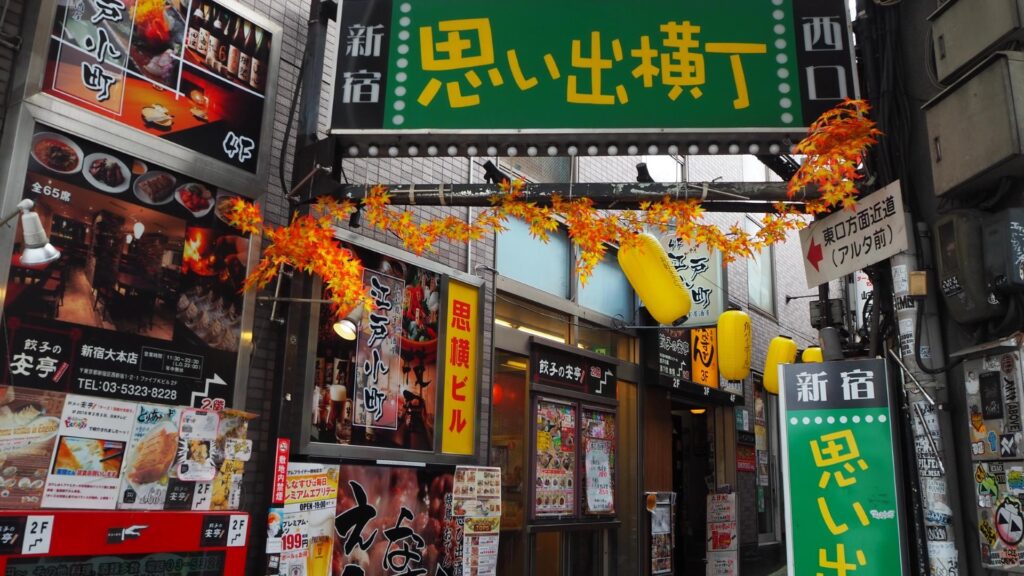

A narrow alley packed with izakayas and lanterns, Omoide Yokocho is pure retro Tokyo charm. The warm glow, smoky air, and sizzling skewers make for atmospheric night shots that transport you back in time. Here, you can not only capture the nostalgic scenery but also savor delicious local dishes — from yakitori grilled over charcoal to hearty bowls of ramen — making it a feast for both your camera and your taste buds.
📍 Access: Shinjuku Station (multiple lines)
💡 Tip: Visit just after sunset for the perfect golden lighting.
⏱ Average Visit Time: 30–60 minutes
🌸 Best Season: Year-round (looks magical on rainy nights)
📸 Instagram Tip: Use #OmoideYokocho or #TokyoNights
9. Tsukiji Outer Market — Colorful Culinary Chaos
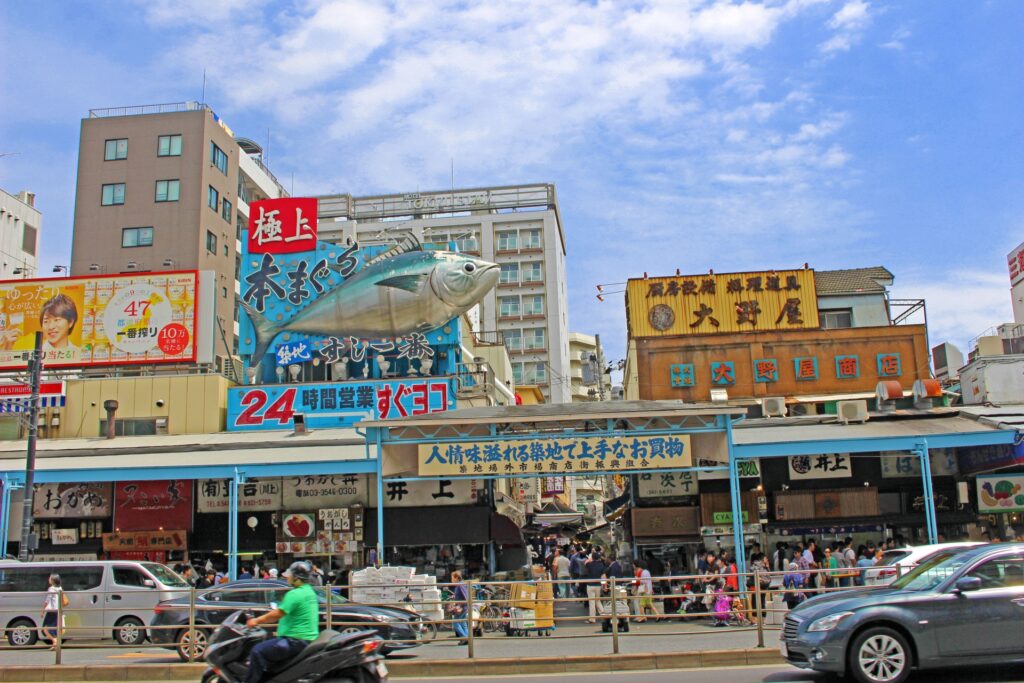
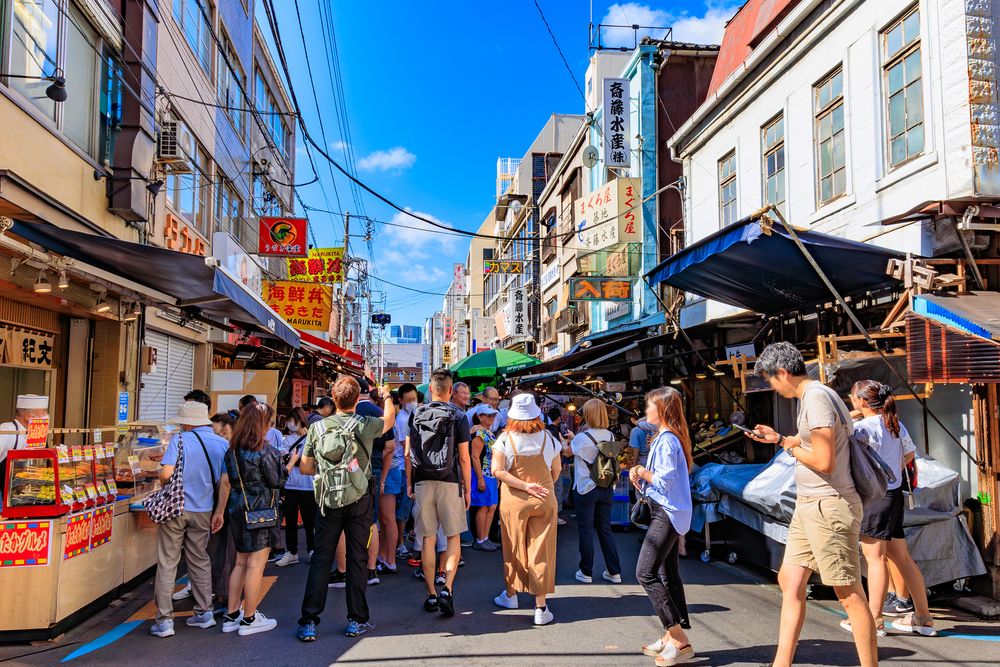
Though the main fish market moved to Toyosu, Tsukiji Outer Market remains a bustling hub for fresh seafood and street food. Vibrant stalls, steaming dishes, and friendly vendors make it a feast for the senses — and the camera.
📍 Access: Tsukiji Station (Tokyo Metro Hibiya Line)
💡 Tip: Morning visits offer the freshest catch and best light.
⏱ Average Visit Time: 1–1.5 hours
🌸 Best Season: Year-round
📸 Instagram Tip: Use #TsukijiMarket or #TokyoFood
10. Tokyo Station & Marunouchi Night View — Timeless Elegance in the Heart of the City

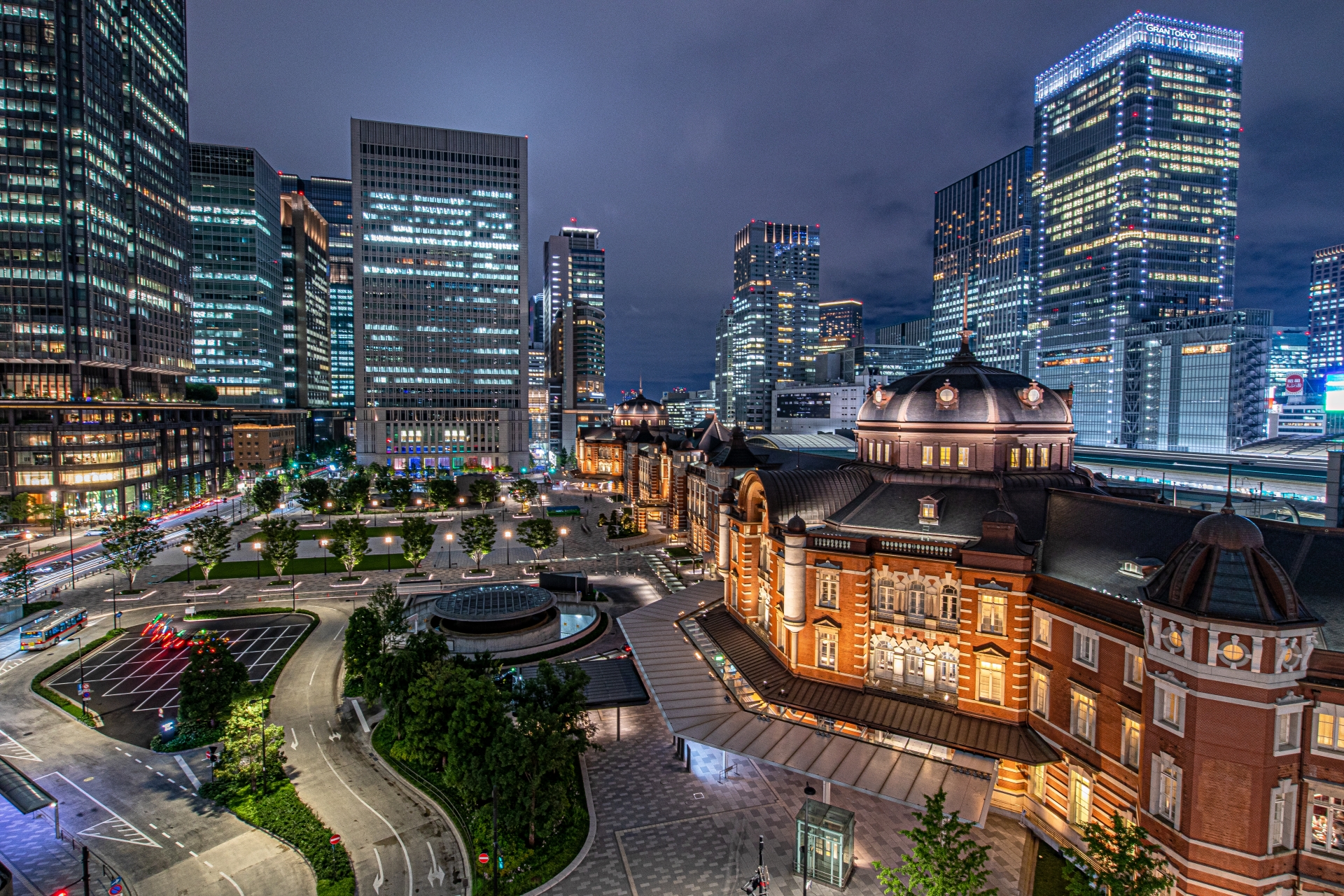
With its beautifully restored red-brick facade, Tokyo Station is one of Japan’s most iconic landmarks. At night, the station glows warmly under the lights, surrounded by the sleek skyscrapers of the Marunouchi business district. Marunouchi, known for its refined atmosphere, is remarkably clean and orderly, offering a calm contrast to the city’s busier areas. Located right in front of Tokyo Station, it’s the perfect starting point for exploring — the Imperial Palace is just a short stroll away. As night falls, step into one of the stylish bars or lounges inside towers like the Shin-Marunouchi Building and enjoy an elegant evening with stunning city views.
📍 Access: Tokyo Station (JR Lines, Tokyo Metro Marunouchi Line) — Marunouchi Exit
💡 Tip: Head to the KITTE rooftop garden for an elevated view, or stroll along Marunouchi Nakadori for illuminated trees in winter.
⏱ Average Visit Time: 30–60 minutes (longer if exploring the area’s cafés and shops)
🌸 Best Season: Winter (illumination season) or early evening year-round
📸 Instagram Tip: Use #TokyoStation or #MarunouchiNight for best visibility
📸 Kyoto’s Most Instagrammable Spots (That Are Also Worth the Trip)
If you’re planning a trip to Kyoto and want more than just picture-perfect views, you’re in for a treat. Kyoto is full of beautiful locations—but some spots offer not just a great photo, but a truly memorable experience. As a local, these are the places I recommend to visitors who want to capture the spirit of Kyoto on camera and in their hearts.
1. Fushimi Inari Taisha — Thousands of Vermilion Torii Gates
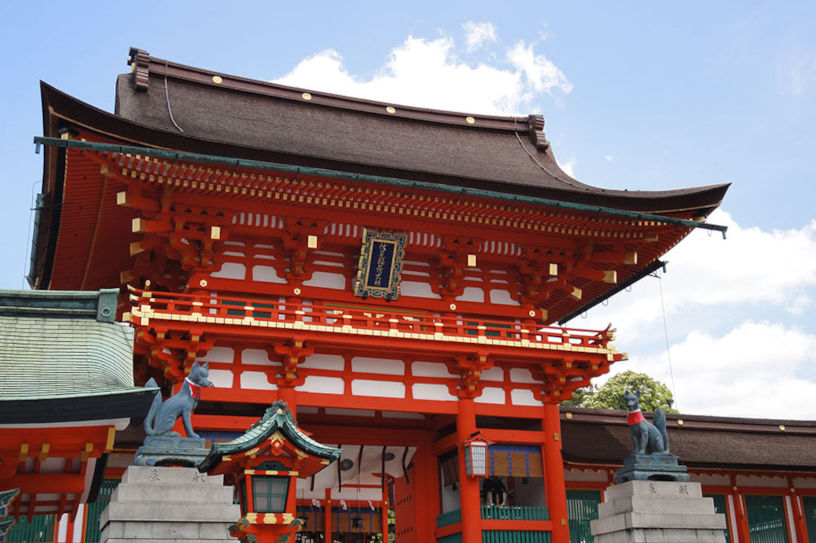
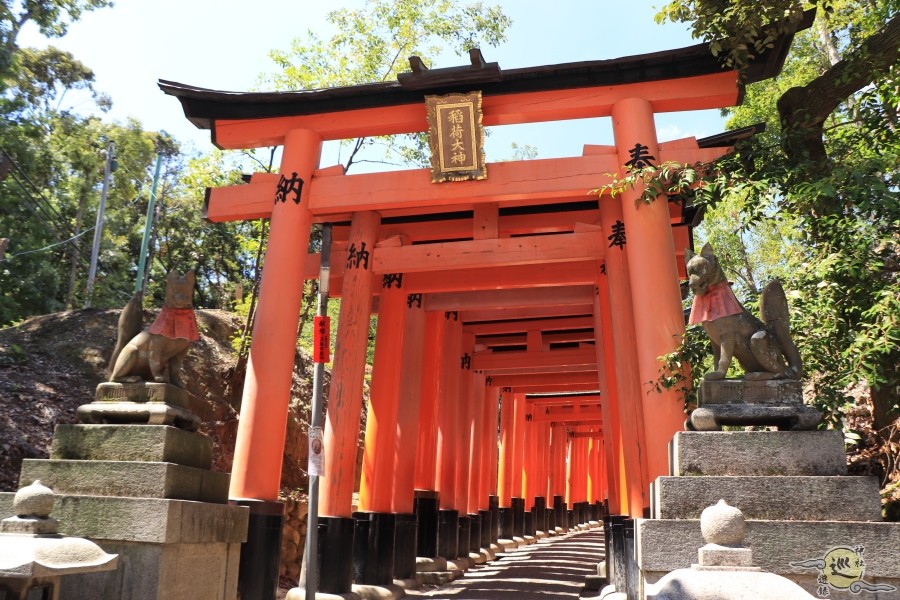
One of Kyoto’s most iconic sights, Fushimi Inari Shrine is famous for its endless rows of bright vermilion torii gates winding up Mt. Inari. Walking through the repeating arches feels like entering a different world. In the early morning, sunlight filters softly between the gates, creating a magical, glowing tunnel.
📍 Access: Fushimi-Inari Station (JR Nara Line) or Fushimi-Inari Station (Keihan Main Line) — 5-minute walk
💡 Tip: Arrive before 8 AM to enjoy an almost empty path and crisp morning light. If you have time, hike all the way to the summit (about 2–3 hours round trip) for peaceful forest views.
⏱ Average Visit Time: 1–2 hours (longer if hiking)
🍂 Best Season: Autumn for colorful maple leaves along the trails; early morning mist adds a mystical feel.
📸 Instagram Tip: Stand inside the tunnel of torii gates, angle your camera low to include the wooden inscriptions, and create depth. Use #FushimiInari and #KyotoTorii.
🍜 Nearby: Try “kitsune udon” (udon with sweet fried tofu) from stalls near the shrine — a local specialty.
2. Kiyomizu-dera Temple — Panoramic Views Over Kyoto
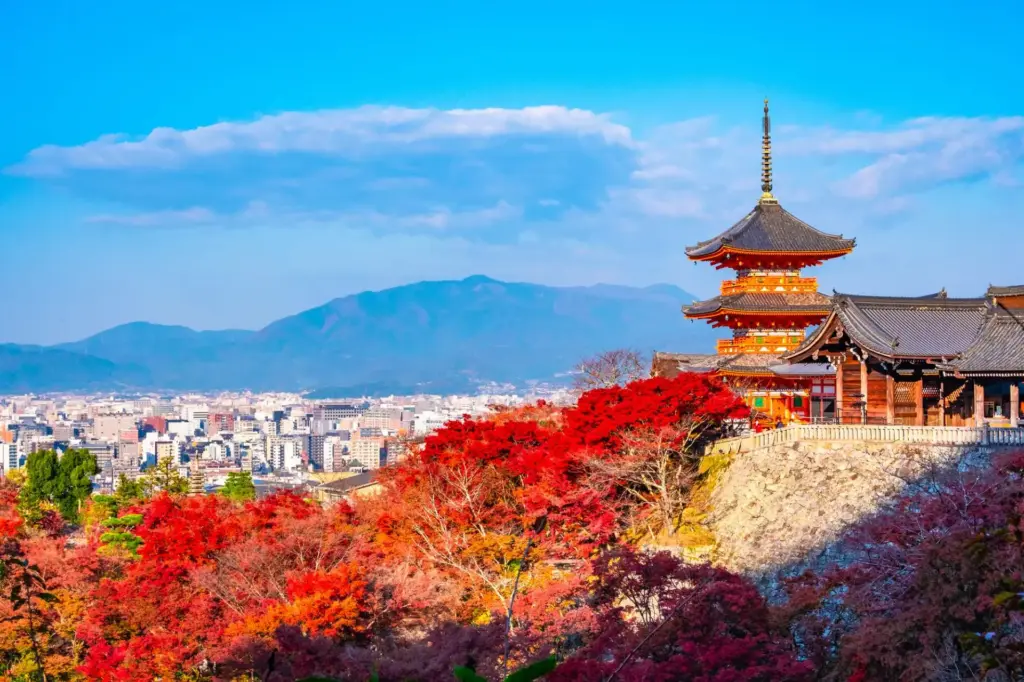
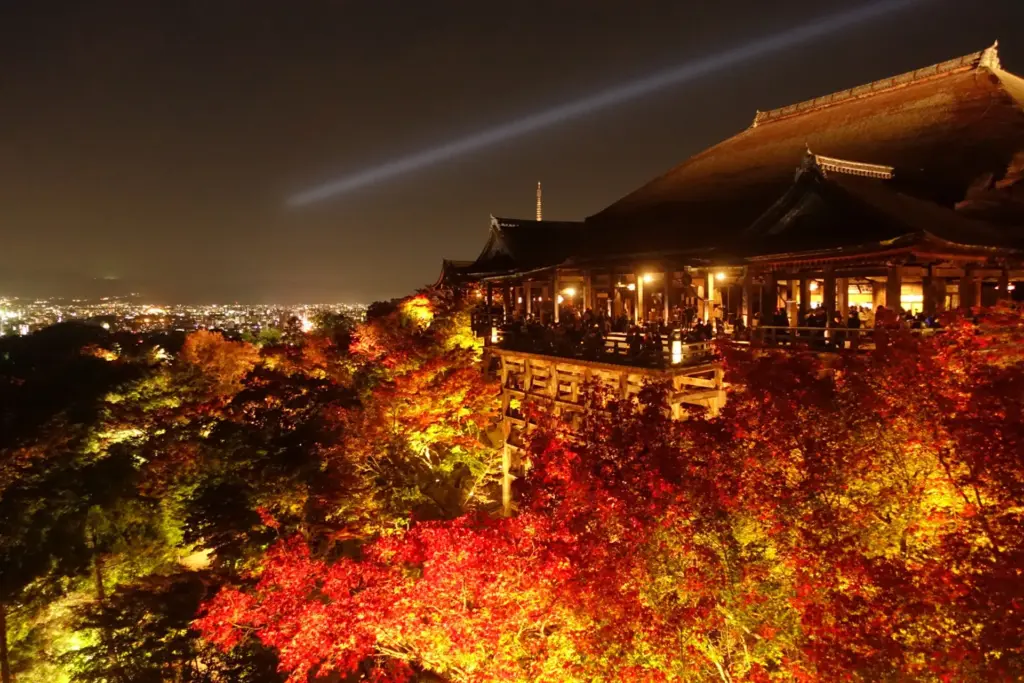
Perched on a hillside, Kiyomizu-dera offers sweeping views of Kyoto framed by cherry blossoms in spring or fiery leaves in autumn. Its famous wooden stage, built entirely without nails, is a marvel of engineering. At sunset, the warm golden light turns the entire scene into a painting.
📍 Access: Gojo-zaka or Kiyomizu-michi bus stop — 10-minute uphill walk
📍 Access: Gojo-zaka or Kiyomizu-michi bus stop — 10-minute uphill walk through charming souvenir streets.
💡 Tip: Arrive about 1 hour before sunset to explore the temple, then watch the city lights begin to sparkle.
⏱ Average Visit Time: 1–1.5 hours
🌸 Best Season: Spring & Autumn, but night illuminations in November are especially magical.
📸 Instagram Tip: Shoot from the Okunoin Hall viewpoint to frame the stage with seasonal foliage.
🍵 Nearby: Sannenzaka & Ninenzaka streets have matcha ice cream and yatsuhashi sweets perfect for photos and snacks.
3. Arashiyama Bamboo Grove — A Path Through Green Serenity
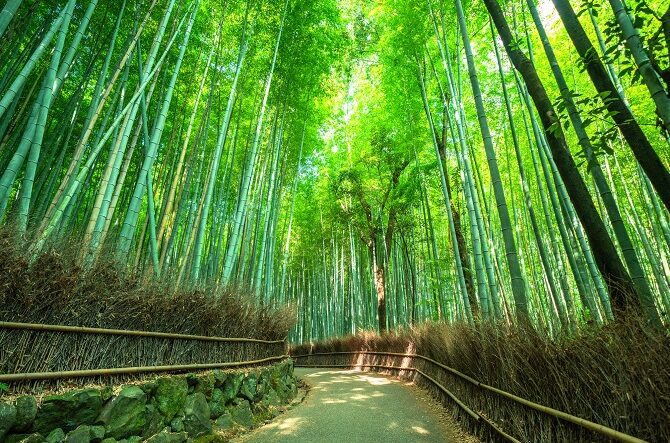
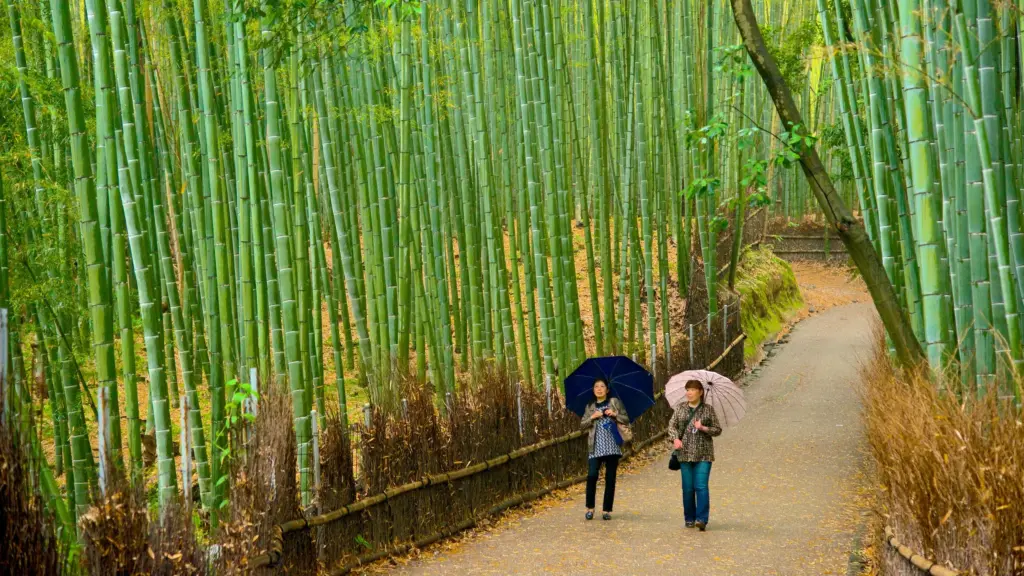
Walking through Arashiyama’s bamboo forest feels like stepping into another world. The towering stalks sway gently, producing a soft rustling sound. Morning fog or overcast skies add an ethereal touch.
📍 Access: Arashiyama Station (Keifuku Line) or JR Saga-Arashiyama Station — 10-minute walk
💡 Tip: Visit before 8:30 AM for fewer people, then explore the nearby Tenryu-ji Temple and Togetsukyo Bridge.
⏱ Average Visit Time: 30–60 minutes
☀️ Best Season: Year-round; winter mornings are particularly peaceful.
📸 Instagram Tip: Shoot vertically to emphasize height, or include a person for scale.
🍡 Nearby: Try dango skewers or yuba (tofu skin) dishes at local shops.
4. Kinkaku-ji (Golden Pavilion) — Shimmering Reflections
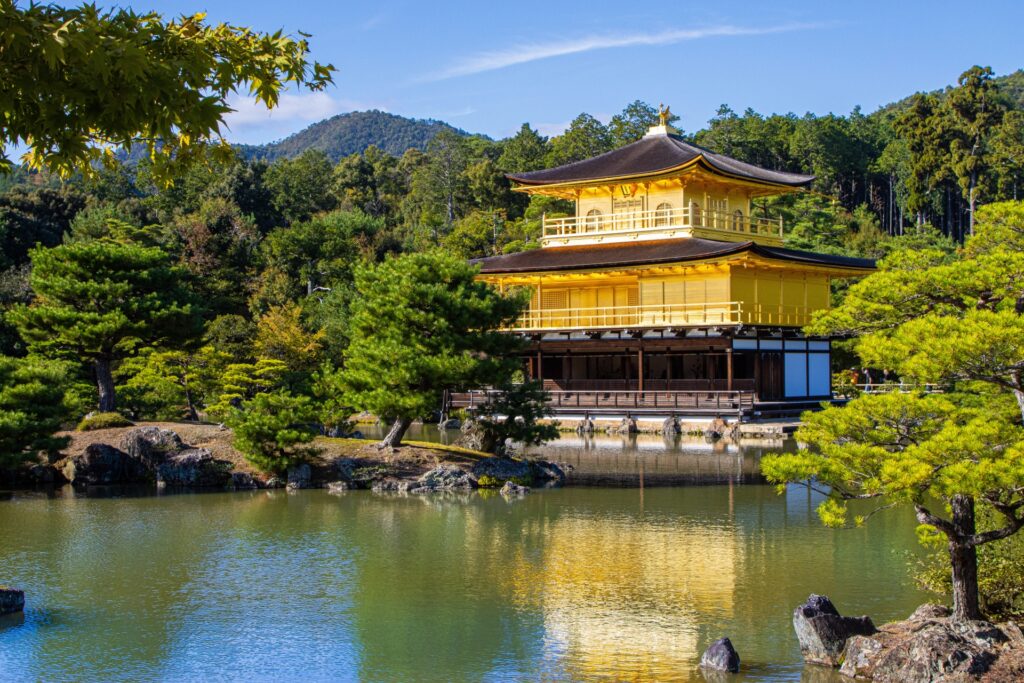
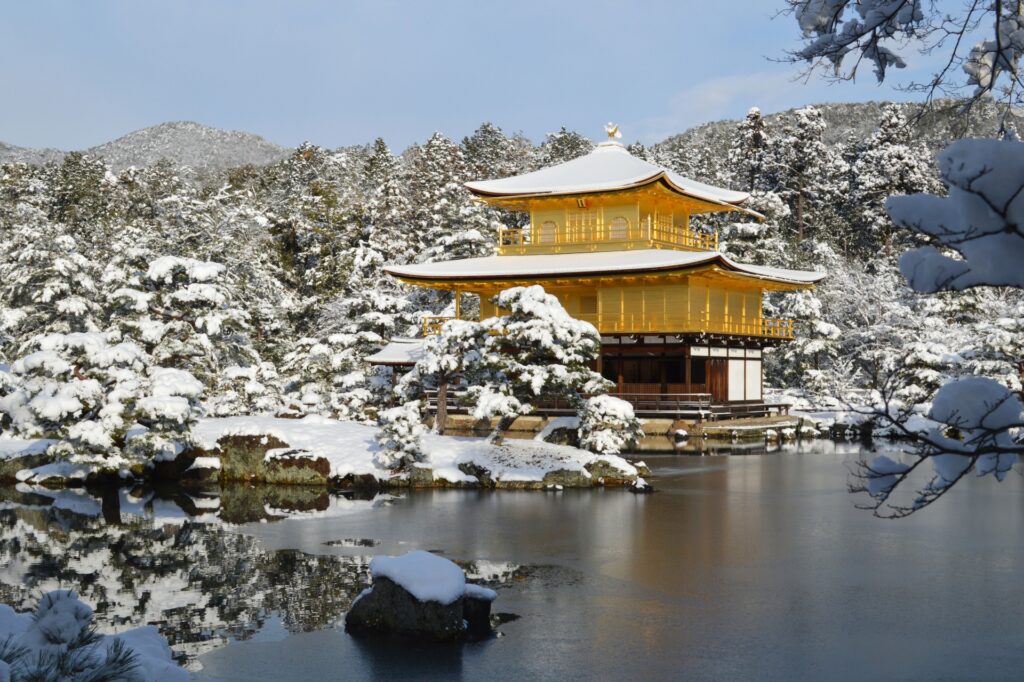
The Golden Pavilion’s top two floors are covered entirely in gold leaf, shimmering against the surrounding pond. Each season paints a different backdrop — cherry blossoms, summer greens, autumn reds, or pure white snow.
📍 Access: Kinkaku-ji-michi bus stop — 5-minute walk
💡 Tip: Arrive mid-morning when the light hits the gold perfectly but before peak crowds.
⏱ Average Visit Time: 45–60 minutes
❄️ Best Season: Winter snowfall for a fairy-tale scene.
📸 Instagram Tip: Stand at the pond’s edge for a symmetrical reflection shot.
🍵 Nearby: Visit Ryoan-ji Temple (famous rock garden) just a 15-minute walk away.
5. Gion District — Geisha Elegance & Historic Streets
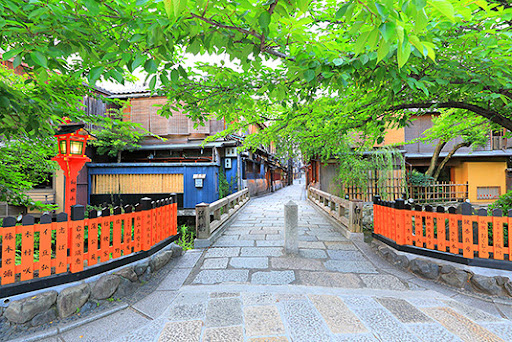
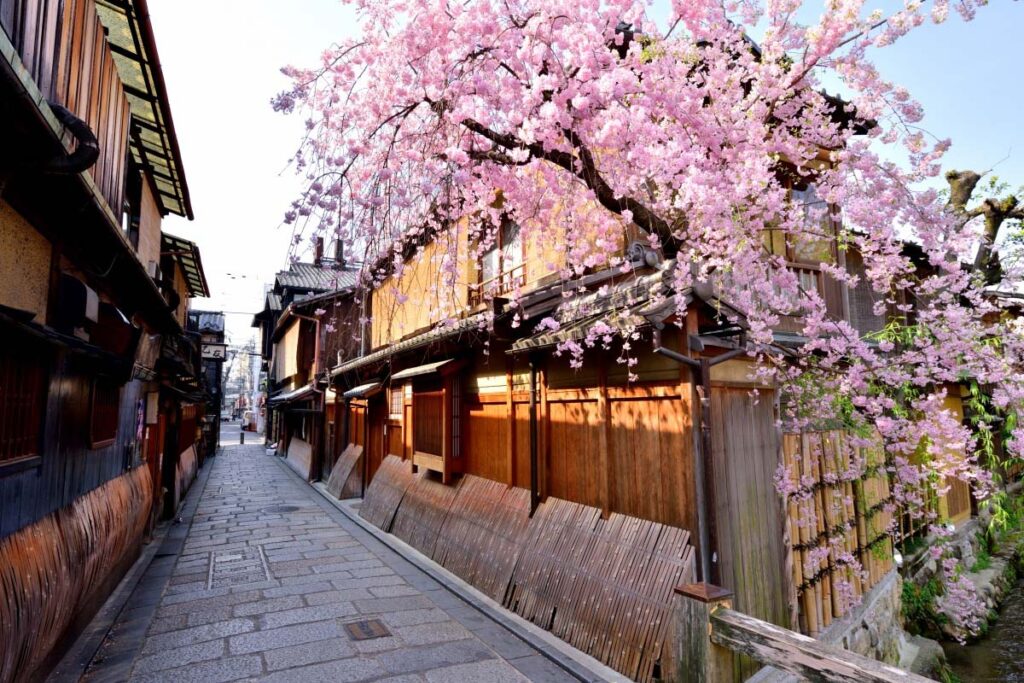
Gion is Kyoto’s famous geisha district, with preserved wooden teahouses and narrow lanes. At dusk, lanterns glow softly, creating a romantic, old-world charm. The most photogenic spots are Hanami-koji Street and Shirakawa Minami-dori, where you can capture iconic images of maiko (apprentice geisha) and glowing lanterns.
📍 Access: Gion-Shijo Station (Keihan Line) or Kawaramachi Station (Hankyu Line)
💡 Tip: Visit around 5–6 PM for a chance to spot geisha heading to appointments, but always keep a respectful distance.
⏱ Average Visit Time: 1–2 hours
🌙 Best Season: Year-round; cherry blossom season adds extra charm.
📸 Instagram Tip: Hanami-koji Street is the classic shot, but Shirakawa Canal offers a quieter alternative.
🍶 Nearby: Try kaiseki (multi-course meal) or simple yakitori at local izakaya.
6. Philosopher’s Path — Tranquil Canal Walk


This tranquil 2-kilometer path runs along a quiet canal near Ginkaku-ji (the Silver Pavilion). In spring, cherry blossoms line both sides, creating a soft pink tunnel. At peak bloom, petals fall gently onto the water, forming a pale-pink carpet — as if stepped straight out of a storybook. In autumn, the reflection of red and gold leaves in the canal adds a calm, quintessentially Kyoto atmosphere.
📍 Access: Right next to Ginkaku-ji (best reached by bus or taxi)
💡 Tip: Visit early in the morning during cherry blossom season to avoid crowds.
⏱ Time needed: 30–60 minutes
🌸 Best season: Late March to early April (cherry blossoms), November (autumn leaves)
📸 Instagram spot: Capture both the blossoms/leaves and their reflection in the water for a dreamy shot.
☕ Nearby: Small cafés along the path serving matcha and seasonal wagashi (Japanese sweets).
7. Yasaka Pagoda — Kyoto’s Most Photographed Street View
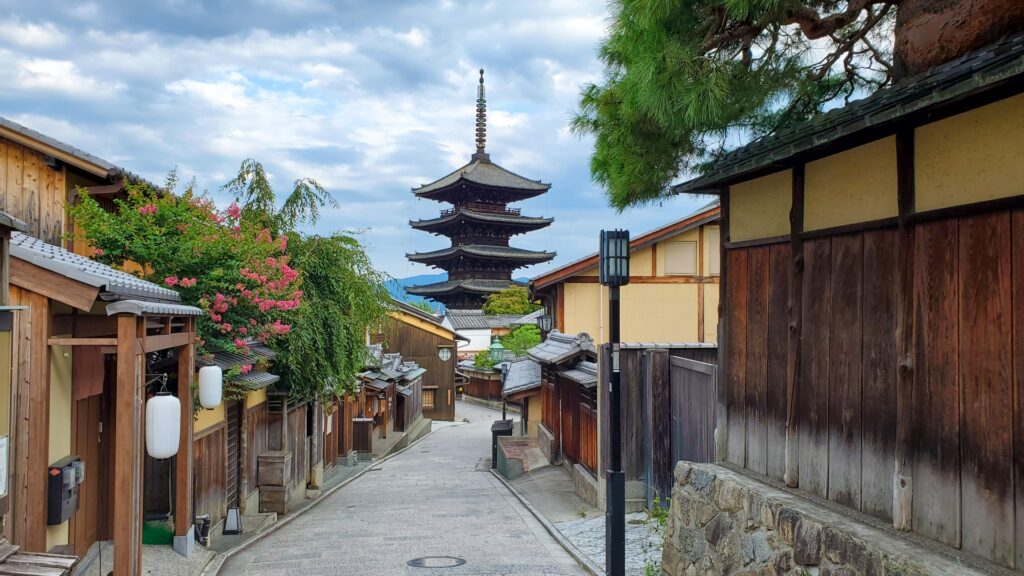

Rising at the end of Higashiyama’s preserved streets, the five-story Yasaka Pagoda is a sight to remember. At sunset, the pagoda glows in warm orange light, framed by cobblestone slopes and traditional wooden townhouses — like stepping back in time. It’s a favorite subject for tourists and professional photographers alike.
📍 Access: 10 minutes on foot from Keihan “Kiyomizu-Gojo” Station
💡 Tip: The “blue hour” right after sunset offers the perfect balance of glowing lights and deep-blue sky.
⏱ Time needed: 20–30 minutes
📸 Instagram spot: The view from the top of Sannenzaka is the classic angle. Pair it with kimono rental for extra charm.
🍵 Nearby: Plenty of cafés serving matcha parfaits and wagashi.
8. Nishiki Market — Kyoto’s Kitchen in Color
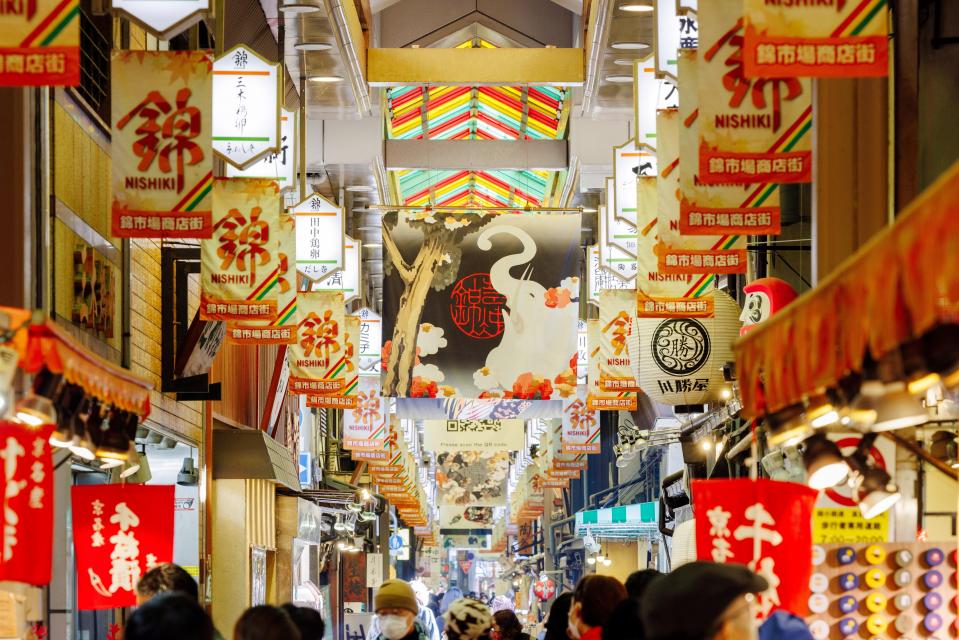

Stretching for about 400 meters under a covered arcade, Nishiki Market is packed with over 100 shops. From Kyoto pickles to matcha sweets and grilled seafood skewers, this is a feast for the senses. The colorful produce and glowing lanterns make it an irresistible spot for both photos and videos.
📍 Access: 5 minutes on foot from Subway “Shijo” or Hankyu “Karasuma” Station
💡 Tip: Go in the morning for a more relaxed visit and to enjoy free tastings.
⏱ Time needed: 1–1.5 hours
📸 Instagram spot: Close-up shots of skewers or steaming dishes capture the market’s energy.
🥢 Must-try: Sweet rolled omelet skewers and fresh sashimi sticks.
9. Ginkaku-ji (Silver Pavilion) — Subtle Beauty & Zen Gardens
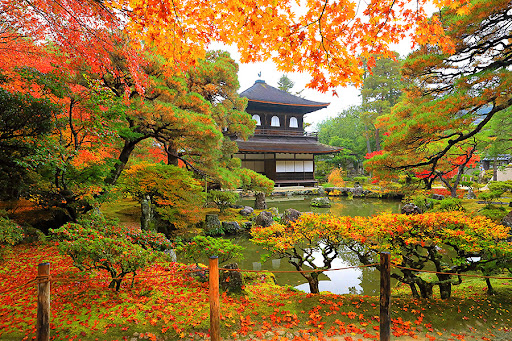
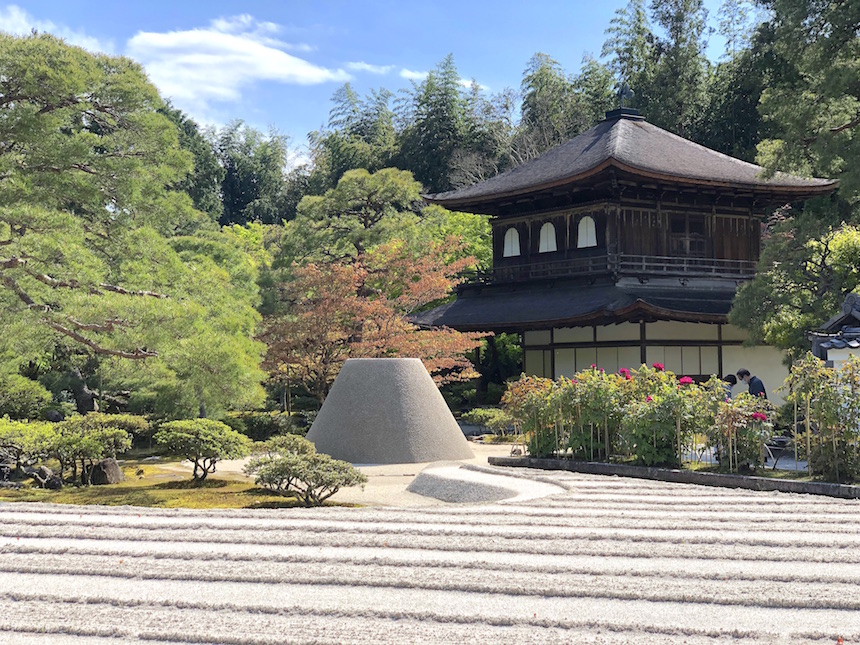
Ginkaku-ji values understated beauty over grandeur. The perfectly raked white sand of the “Sea of Silver Sand” and the moss-covered gardens create a serene space that quiets the mind. Seasonal changes add new layers of beauty — crimson maples in autumn, vibrant fresh green leaves in early summer.
📍 Access: Right next to Philosopher’s Path (best reached by bus or taxi)
💡 Tip: Overcast days provide soft, diffused light — perfect for photography.
⏱ Time needed: 45–60 minutes
📸 Instagram spot: Frame the pavilion through colorful autumn leaves for an artistic shot.
10. Kifune Shrine (Sacred Lantern Path & Seasonal Magic)
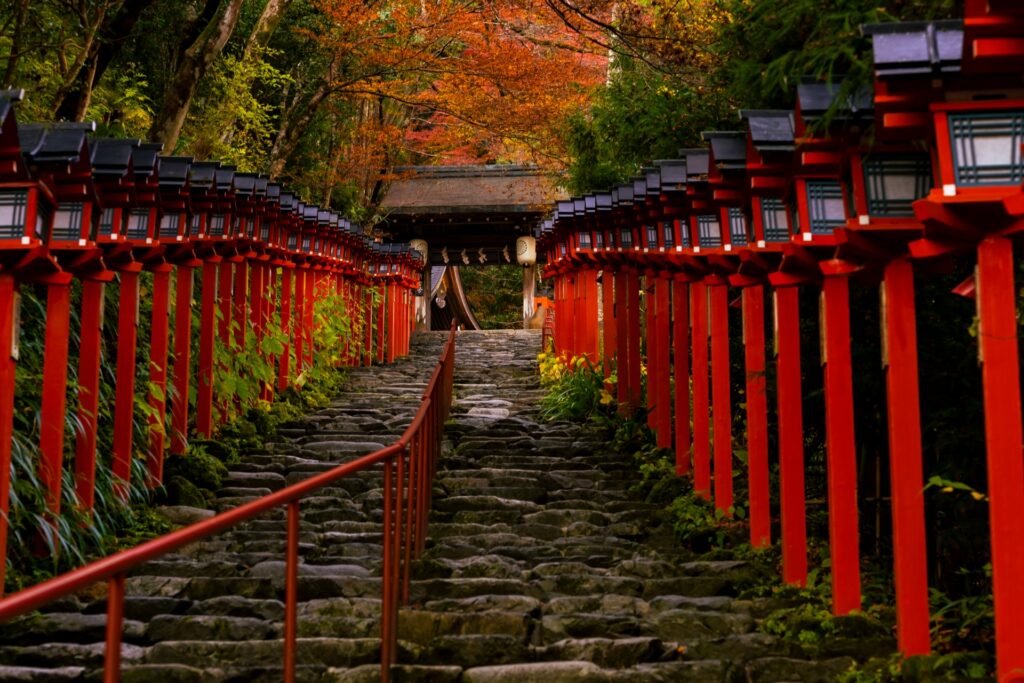
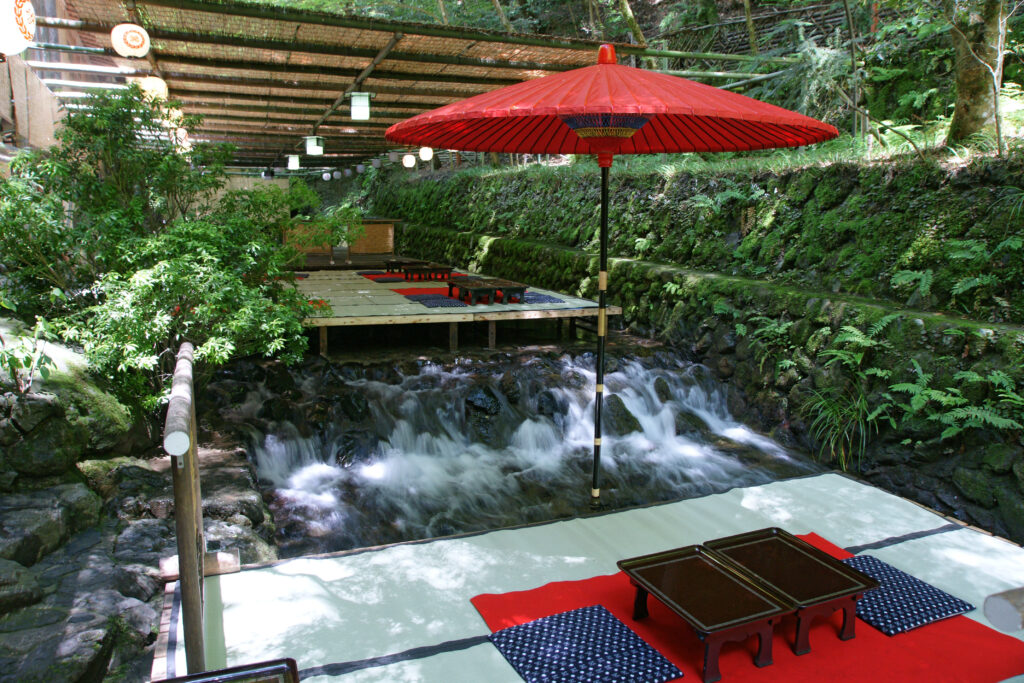
Tucked away in Kyoto’s northern mountains, Kifune Shrine is a hidden gem where nature and tradition meet. The iconic red-lantern-lined stone staircase leading to the shrine gate is breathtaking in every season — glowing warmly against fresh greenery in spring, vibrant in the summer sun, framed by autumn leaves, and ethereal under winter snow.
In summer, you can enjoy a unique dining experience known as kawadoko — platforms built directly over the river, where you’ll savor seasonal dishes while cool water flows beneath your feet. In winter, if you’re lucky enough to visit on a snowy day, the entire approach transforms into a fairytale scene.
📍 Access: 30–40 min from Kyoto Station by train (Eizan Line) + short bus ride
💡 Tip: Check weather forecasts — snow days are rare but unforgettable. Arrive early in summer for riverside dining seats.
⏳ Average Visit Time: 1.5–2 hours (longer if dining)
📸 Instagram Spot: Capture the lantern-lined staircase head-on; in winter, frame the red lanterns against pure white snow.
🍽 Nearby Eats: Kawadoko river dining in summer, traditional mountain cuisine in local ryokan
Final Thoughts: Two Cities, Two Souls
If Tokyo is a city of momentum—full of color, contrast, and movement—Kyoto is a city of reflection, where time slows and tradition quietly shapes every corner. Experiencing both offers something rare: a glimpse into Japan’s present and past, captured in two unforgettable cities.
In Tokyo, your lens catches neon streets, digital art, and energetic crowds. In Kyoto, you frame temple shadows, bamboo light, and the calm of stone paths. Each moment tells a different story—but both are deeply, beautifully Japanese.
Whether you’re planning a short trip or a full itinerary, give yourself space for both the excitement of Tokyo and the elegance of Kyoto. Let your curiosity guide you, let your camera capture the magic—and let Japan leave its mark on you.
✨ Your journey starts here. Let’s explore Japan together.
📖 Related Read:
Curious which city matches your travel style?
In our guide Tokyo vs Kyoto: What Do You Want from Japan?, we compare Tokyo’s high-energy streets and Kyoto’s timeless charm to help you decide where to spend more of your trip.
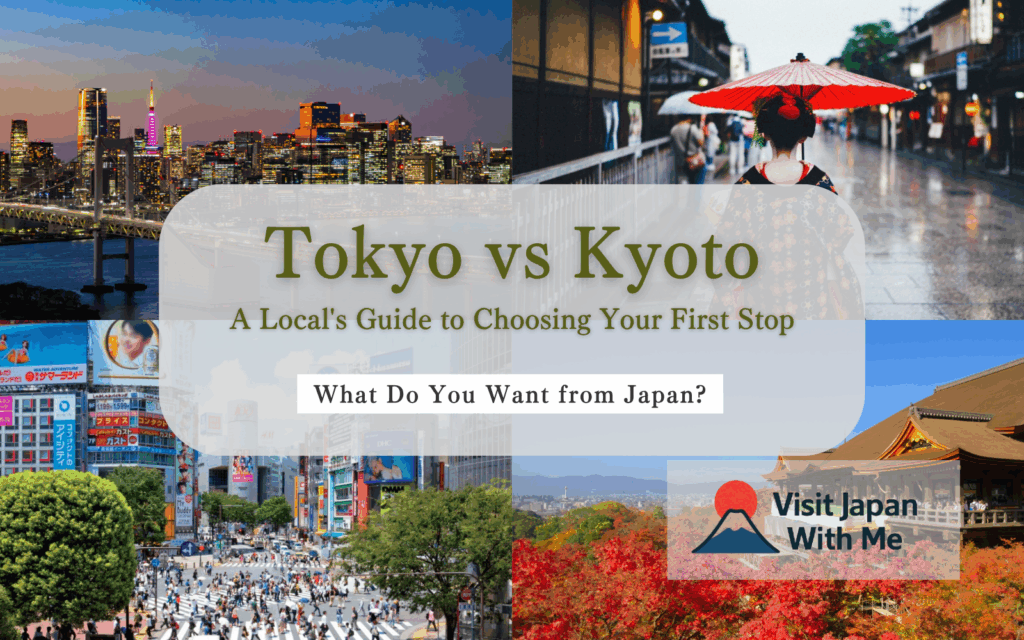
Not sure whether to visit Tokyo or Kyoto first?
It all comes down to what you want from your trip. Whether you’re drawn to Tokyo’s neon lights, pop culture, and fast-paced city life, or Kyoto’s serene temples, traditional streets, and timeless charm, this guide compares the two side-by-side—helping you choose the Japan that matches your travel dreams.
Frequently Asked Questions About Instagrammable Spots in Tokyo and Kyoto
Whether you’re exploring the neon-lit streets of Tokyo or the timeless temples of Kyoto, Japan is full of photo-worthy locations.
To help you plan your perfect shots, here are answers to the most common questions travelers ask about finding, photographing, and enjoying the country’s most Instagrammable spots.

